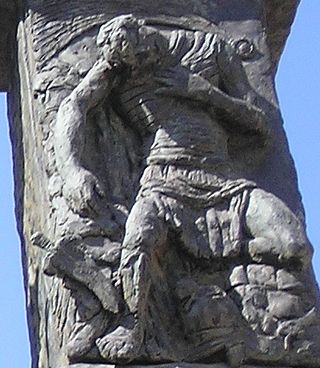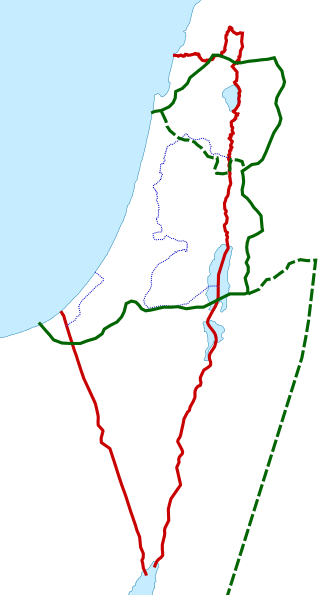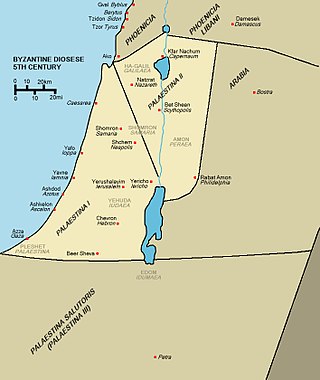
The history of Israel covers an area of the Southern Levant also known as Canaan, Palestine or the Holy Land, which is the geographical location of the modern states of Israel and Palestine. From a prehistory as part of the critical Levantine corridor, which witnessed waves of early humans out of Africa, to the emergence of Natufian culture c. 10th millennium BCE, the region entered the Bronze Age c. 2,000 BCE with the development of Canaanite civilization, before being vassalized by Egypt in the Late Bronze Age. In the Iron Age, the kingdoms of Israel and Judah were established, entities that were central to the origins of the Jewish and Samaritan peoples as well as the Abrahamic faith tradition. This has given rise to Judaism, Samaritanism, Christianity, Islam, Druzism, Baha'ism, and a variety of other religious movements. Throughout the course of human history, the Land of Israel has come under the sway or control of various polities and, as a result, it has historically hosted a wide variety of ethnic groups.

Palestinians or Palestinian people, also referred to as Palestinian Arabs, are an ethnonational group descending from peoples who have inhabited the region of Palestine over the millennia, and who today are culturally and linguistically Arab.

Samaria is the Hellenized form of the Hebrew name Shomron, used as a historical and biblical name for the central region of Israel, bordered by Judea to the south and Galilee to the north. The region is known to the Palestinians in Arabic under two names, Samirah, and Mount Nablus.

The Israelites were a group of Semitic-speaking tribes in the ancient Near East who, during the Iron Age, inhabited a part of Canaan.

The Jewish diaspora or exile is the dispersion of Israelites or Jews out of their ancient ancestral homeland and their subsequent settlement in other parts of the globe.

The Bar Kokhba revolt was a large-scale armed rebellion initiated by the Jews of Judea, led by Simon bar Kokhba, against the Roman Empire in 132 CE. Lasting until 135 or early 136, it was the third and final escalation of the Jewish–Roman wars. Like the First Jewish–Roman War and the Second Jewish–Roman War, the Bar Kokhba revolt resulted in a total Jewish defeat; Bar Kokhba himself was killed by Roman troops at Betar in 135 and the Jewish rebels who remained after his death were all killed or enslaved within the next year.
The population of the region of Palestine, which approximately corresponds to modern Israel and the Palestinian territories, has varied in both size and ethnic composition throughout the history of Palestine.

Palestine is a geographical region in West Asia. Situated in the Southern Levant, it is usually considered to include Israel and the State of Palestine, though some definitions also include parts of northwestern Jordan. Other historical names for the region include Canaan, the Promised Land, the Land of Israel, or the Holy Land.

The Jewish–Roman wars were a series of large-scale revolts by the Jews of Judaea and the Eastern Mediterranean against the Roman Empire between 66 and 135 CE. The First Jewish–Roman War and the Bar Kokhba revolt were nationalist rebellions, striving to restore an independent Judean state, while the Kitos War was more of an ethno-religious conflict, mostly fought outside the province of Judaea. As a result, there is variation in the use of the term "Jewish-Roman wars." Some sources exclusively apply it to the First Jewish-Roman War and the Bar Kokhba revolt, while others include the Kitos War as well.
Jewish population centers have shifted tremendously over time, due in modern times to large scale population movements, and in earlier times due to a combination of population movements, religious conversions and religious assimilation. Population movements have been caused by both push and pull factors, with the most notable push factors being expulsions and persecutions, in particular the pogroms in the Russian Empire and the Holocaust.

Judaea was a Roman province from 6 to 132 CE, which incorporated the Levantine regions of Judea, Samaria and Idumea, extending over parts of the former regions of the Hasmonean and Herodian kingdoms of Judea. The name Judaea was derived from the Iron Age Kingdom of Judah.
The history of the Jews and Judaism in the Land of Israel begins in the 2nd millennium BCE, when Israelites emerged as an outgrowth of southern Canaanites. During biblical times, a postulated United Kingdom of Israel existed but then split into two Israelite kingdoms occupying the highland zone: the Kingdom of Israel (Samaria) in the north, and the Kingdom of Judah in the south. The Kingdom of Israel was conquered by the Neo-Assyrian Empire, and the Kingdom of Judah by the Neo-Babylonian Empire. Initially exiled to Babylon, upon the defeat of the Neo-Babylonian Empire by the Achaemenid Empire under Cyrus the Great, many of the Jewish exiles returned to Jerusalem, building the Second Temple.

Palaestina Prima or Palaestina I was a Byzantine province that existed from the late 4th century until the Muslim conquest of the Levant in the 630s, in the region of Palestine. It was temporarily lost to the Sassanid Empire in 614, but re-conquered in 628.

Strategically situated between three continents, the region of Palestine has a tumultuous history as a crossroads for religion, culture, commerce, and politics. Palestine is the birthplace of Judaism and Christianity, and has been controlled by many kingdoms and powers, including Ancient Egypt, Ancient Israel and Judah, the Persian Empire, Alexander the Great and his successors, the Hasmoneans, the Roman Empire, several Muslim caliphates, and the crusaders. In modern times, the area was ruled by the Ottoman Empire, then the British Empire and since 1948 it has been divided into Israel, the West Bank, and the Gaza Strip.

Judea or Judaea is a mountainous region of the Levant. Traditionally dominated by the city of Jerusalem, it is now part of Palestine and Israel. The name's usage is historic, having been used in antiquity and still into the present day; it originates from Yehudah, a Hebrew name. Yehudah was a son of Jacob, who was later given the name "Israel" and whose sons collectively headed the Twelve Tribes of Israel. Yehudah's progeny among the Israelites formed the Tribe of Judah, with whom the Kingdom of Judah is associated. Related nomenclature continued to be used under the rule of the Babylonians, the Persians, the Greeks, and the Romans. Under the Hasmoneans, the Herodians, and the Romans, the term was applied to an area larger than the historical region of Judea. In 132 CE, the Roman province of Judaea was merged with Galilee to form the enlarged province of Syria Palaestina.

The history of the Jews in the Roman Empire traces the interaction of Jews and Romans during the period of the Roman Empire. A Jewish diaspora had migrated to Rome and to the territories of Roman Europe from the land of Israel, Anatolia, Babylon and Alexandria in response to economic hardship and incessant warfare over the land of Israel between the Ptolemaic and Seleucid empires from the 4th to the 1st centuries BCE. In Rome, Jewish communities thrived economically. Jews became a significant part of the Roman Empire's population in the first century CE, with some estimates as high as 7 million people; however, this estimation has been questioned.
The timeline of the Palestine region is a timeline of major events in the history of Palestine. For more details on the history of Palestine see History of Palestine. In cases where the year or month is uncertain, it is marked with a slash, for example 636/7 and January/February.

Tzippora Sharett was the wife of the second prime minister of Israel, Moshe Sharett.

Khirbet Kurkush is an archeological site in the State of Palestine, located in the city of Bruqin, in the Salfit Governorate in the northern West Bank.
The origin of the Palestinians, an ethnonational group residing in the Southern Levant, has been the focus of studies in history, linguistics and genetics, as well as nationalistic ideology. Ethnically, Palestinians share broad religious, linguistic, and cultural practices with Jordanians, Syrians and Lebanese, as well as variations unique to Palestine such as Palestinian Arabic. At the same time Palestinians are part of the broader Arab world. The majority of Palestinians are Muslim, although there is a minority of Palestinian Christians.














